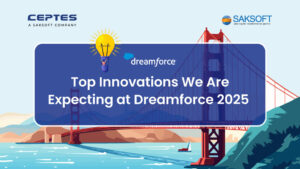Einstein Vision, a whole new launch of APIs for the process of building the AI-powered applications. No sooner this vision has been initiated that Salesforce is making it easier for you to embed the process of image recognition directly into your apps. In fact, rather than taking hands into entirely building and managing the specialized infrastructure to host the deep learning models, it is always better to simply connect to Einstein Vision’s HTTP/REST API for custom image recognition.
Now, every individual can avail the advantage of pre-trained image classifiers, or rather to put it in simple words, train their custom classifiers, to solve a huge number of image recognition. This is indeed done using cases, empowering all the end users across sales, and even marketing to be smarter and predictive.
Why do we need Einstein Vision?
Einstein Vision is used to discover all your products across all the social media channels. This is done to analyze the observational data in healthcare and life science applications. Accordingly, it will enable visual search in e-Commerce apps.
- Visual Search – A way to expand your ways, so that your targeted audience can discover your products and thereby increase sales.
- Brand Detection – A process to monitor all your brands across the channels, to increase your marketing reach and conserve the brand integrity.
- Product Identification – This is a way you can identify your products and at the same time streamline sales processes and customer service.
The Algorithms behind Einstein Vision
 It is true that the Einstein Vision utilizes the advancements made in the genre of deep learning and even an underlying architecture of the neutral networks. It is the way to classify images with absolute accuracy. This as well helps in utilizing multiple hidden layers to extract all the hidden features and assign the apt weights and biases to the feature output. There is always an input layer, where mostly all the images are fed, and even there was a hidden layer, which extracts each feature of the image’s contours, the shapes, and even the corners to predict new images eventually.
It is true that the Einstein Vision utilizes the advancements made in the genre of deep learning and even an underlying architecture of the neutral networks. It is the way to classify images with absolute accuracy. This as well helps in utilizing multiple hidden layers to extract all the hidden features and assign the apt weights and biases to the feature output. There is always an input layer, where mostly all the images are fed, and even there was a hidden layer, which extracts each feature of the image’s contours, the shapes, and even the corners to predict new images eventually.
How does this vision work?
 It is true that the Einstein Vision is a part of a supervised learning technique in which a model is thoroughly trained on the prelabeled training data. This training dataset consists of labeled images and is as well loaded into the Einstein via an API call. Then, a REST API call is made to train the dataset, and hence the output is a trained model ID. Finally, an API call is made to predict the label of a new image that has never been seen before.
It is true that the Einstein Vision is a part of a supervised learning technique in which a model is thoroughly trained on the prelabeled training data. This training dataset consists of labeled images and is as well loaded into the Einstein via an API call. Then, a REST API call is made to train the dataset, and hence the output is a trained model ID. Finally, an API call is made to predict the label of a new image that has never been seen before.
Hence, the actual strength of the Einstein Vision is its ability to train custom models to completely to recognize the aspects you care about completely. These are some of the advancements in image recognition that are developing in the new era of customer success and enabling companies to predict the market research in a better way.
CEPTES offers a full range of Salesforce services
CEPTES provides a full range of Salesforce services from consultation to migration to implementation, support, and maintenance. For immediate contact, feel free to email us at contact@ceptes.com. We look forward to hearing from you soon!
CONTENT REFERENCE
- metamind.io
- trailhead.salesforce.com/en/projects/predictive_vision_apex
- github.com/rajdeepd/einstein-go-apis
- developer.salesforce.com/blogs/developer-relations/2017/05/using-einstein-vision-within-golang.html
- developer.salesforce.com/blogs/developer-relations/2017/04/using-einstein-vision-on-Heroku-or-mobile.html





















